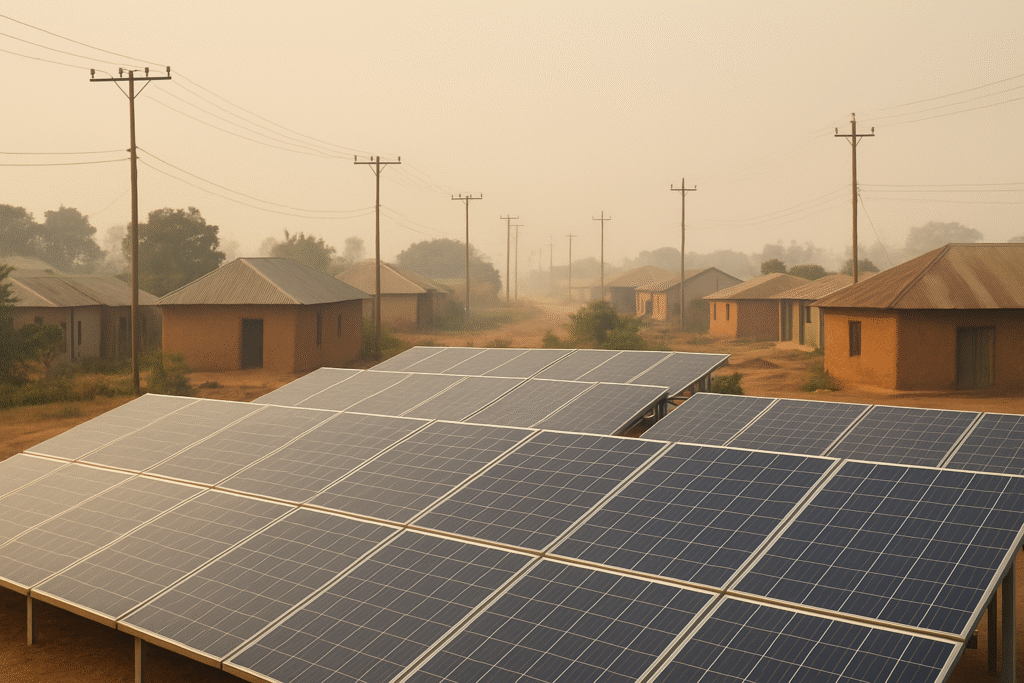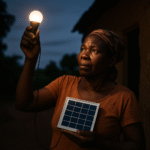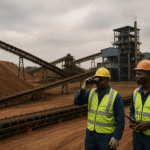Even as the narrative of Africa’s renewable potential grows louder, the latest data reveals a sobering reality. Sub-Saharan Africa’s ability to transition from fossil fuels to clean power has stalled. According to the World Economic Forum’s latest Fostering Effective Energy Transition assessment, the region registered no year-on-year improvement in energy transition readiness for 2025. The score remains flat, despite a decade of declarations and high-profile climate pledges.
This stagnation raises a critical question. How can the region simultaneously rank among the world’s richest in renewable resources and yet be the least ready to transition? The gap between promise and progress is widening, not closing. If Africa is to participate meaningfully in the global shift to cleaner energy, the region must confront the financing, governance, and political obstacles preventing transitions from moving beyond ambition.
A Region Rich in Sunlight, Yet Poor in Power
Sub-Saharan Africa possesses vast renewable endowments. The African continent holds more than 60 percent of the world’s best solar resources. SEforALL estimates that renewable energy capacity in Sub-Saharan Africa could triple by 2030, unlocking a market worth USD 27 billion in new industries and green manufacturing.
Yet the region remains the least electrified in the world. More than 600 million people still lack access to electricity, and those who are connected face some of the highest power costs relative to their income globally. Without major changes to how power systems are financed and governed, the region’s energy future will continue to lag behind its potential.
Three years ago, development institutions projected that Africa could leapfrog fossil fuels. Today, that confidence has cooled. Project after project faces delays, stalled financing decisions, and persistent governance hurdles.
A renewable-powered future will not materialise through resource abundance alone.
Finance: The Most Expensive Power in the World
The cost of capital remains the single biggest barrier to clean-energy development in Sub-Saharan Africa.
Local developers often pay 12 to 20 percent interest to borrow for renewable projects up to four times the financing cost in Europe or China. The reason is less about project risk and more about perceived risk. Currency fluctuations, sovereign-credit ratings, and thin capital markets inflate premiums far above actual market conditions.
This creates a self-reinforcing cycle. High finance costs make projects expensive; expensive power slows electrification; slower electrification erodes investor confidence, resulting in even higher risk pricing.
Most renewable projects rely heavily on external financing denominated in dollars. When local currencies weaken, repayment obligations surge, threatening utility solvency and public finances. It is a vulnerability built into the financing model itself.
Unless capital becomes affordable on African terms, energy transitions will remain aspirational.
Fossil Fuel Lock-In: A System Built on the Past
While clean-energy targets multiply, fossil-fuel systems continue to dominate in practice.
Sub-Saharan Africa’s grid infrastructure still revolves primarily around thermal power. Nigeria’s economy is structurally dependent on oil; South Africa’s employment landscape is still anchored to coal; countries such as Mozambique and Senegal rely on new gas developments to secure export revenue and foreign investment.
When national budgets depend on fossil fuels, the pace of transition slows. Governments that fear fiscal instability are less likely to set firm fossil-fuel phase-out timelines, reform subsidies, or secure concessional finance.
The result: new fossil investments being locked in just as the world demands their retirement.
Governance and Policy Gaps: Commitment Without Execution
The transition is being slowed not just by technology or cost, but by institutional capacity.
Key shortcomings include:
- Weak procurement frameworks
- Delayed regulatory approvals
- Insufficient grid-extension planning
- Unclear pathways for coal and oil asset retirement
- Lack of structured community-benefit frameworks
These are not technical issues; they are political economy barriers. Even where strong policies exist, implementation lags because of competing interests, short-term political horizons, and fragmented coordination between ministries, utilities, and regional bodies.
Without accountable, data-driven governance, even the best policy declarations fade quickly into paper commitments.
Energy Access: The Justice Gap Widens
Sub-Saharan Africa’s transition is inseparable from social justice. Any delay in progress has cascading consequences:
- Women remain disproportionately burdened by energy poverty
- Clinics and hospitals operate on costly diesel backup
- School performance falters where children study by candlelight
- Small enterprises lose productivity to unreliable power
The ILO estimates that up to 25 million African jobs could be created through green-sector investments by 2030, yet that opportunity remains theoretical unless access expands rapidly.
The longer transitions stall, the deeper inequality becomes.
Opportunities Emerging, If the Region Can Seize Them
Despite current stagnation, new strategic openings are emerging.
1. Regional Energy Markets
Power pools in West, East, Central, and Southern Africa can reduce overall system costs through:
- shared generation capacity
- cross-border transmission
- demand aggregation
Regional planning lowers investment risk for large-scale renewables and storage.
2. Industrial Hubs for Transition Technologies
The UN’s industrial hub model suggests Africa can build:
- solar-panel assembly plants
- battery factories
- electric-mobility component manufacturing
Capturing just 10 percent of projected global green-tech investment could add USD 56 billion annually in value.
3. Carbon Markets and Sovereign Instruments
New financing tools (including Article 6 mechanisms and green infrastructure bonds) create chances to monetise emissions reductions and invest proceeds locally.
Carbon trading must be designed to ensure:
- transparency,
- community safeguards,
- and value retention in-country.
4. Local-Currency Finance
African lenders and pension funds are increasingly willing to participate in grid upgrades, mini-grids, and residential solar. Local-currency lending reduces exposure to exchange-rate shocks and aligns financing with domestic economies.
These opportunities demand one precondition: credible policy signals.
Where Leadership Can Change the Trajectory
To shift from stagnation to acceleration, the region must pursue five priorities:
- Set fossil-fuel retirement plans with firm timelines
Clear exit horizons attract affordable capital and increase investor confidence. - Deploy concessional finance strategically
Use guarantees, grants, and blended finance to reduce capital costs, not inflate debt. - Strengthen institutions and regulatory oversight
Transparent procurement and empowered regulators lower perceived risk. - Treat electrification as both infrastructure and development policy
Universal access is foundational to health, education, industrialisation and civic dignity. - Integrate gender equality into financing frameworks
Women must be empowered as energy entrepreneurs and market participants, not only beneficiaries.
These steps form a practical blueprint for readiness, the missing ingredient in Sub-Saharan Africa’s transition journey.
A Moment for Reckoning, Not Rhetoric
Global climate diplomacy has offered African governments a long runway for ambition. That era is ending. Investors and international partners no longer reward declarations without delivery.
The longer readiness remains flat, the more the region risks:
- climate-finance displacement to faster-moving regions,
- continued fossil-fuel lock-in,
- rising social frustration,
- and deepening global inequality.
Sub-Saharan Africa’s transition gap reflects not a failure of potential, but a failure of preparation.
The clock toward 2030 is not slowing. The transition must accelerate, now, not later.



